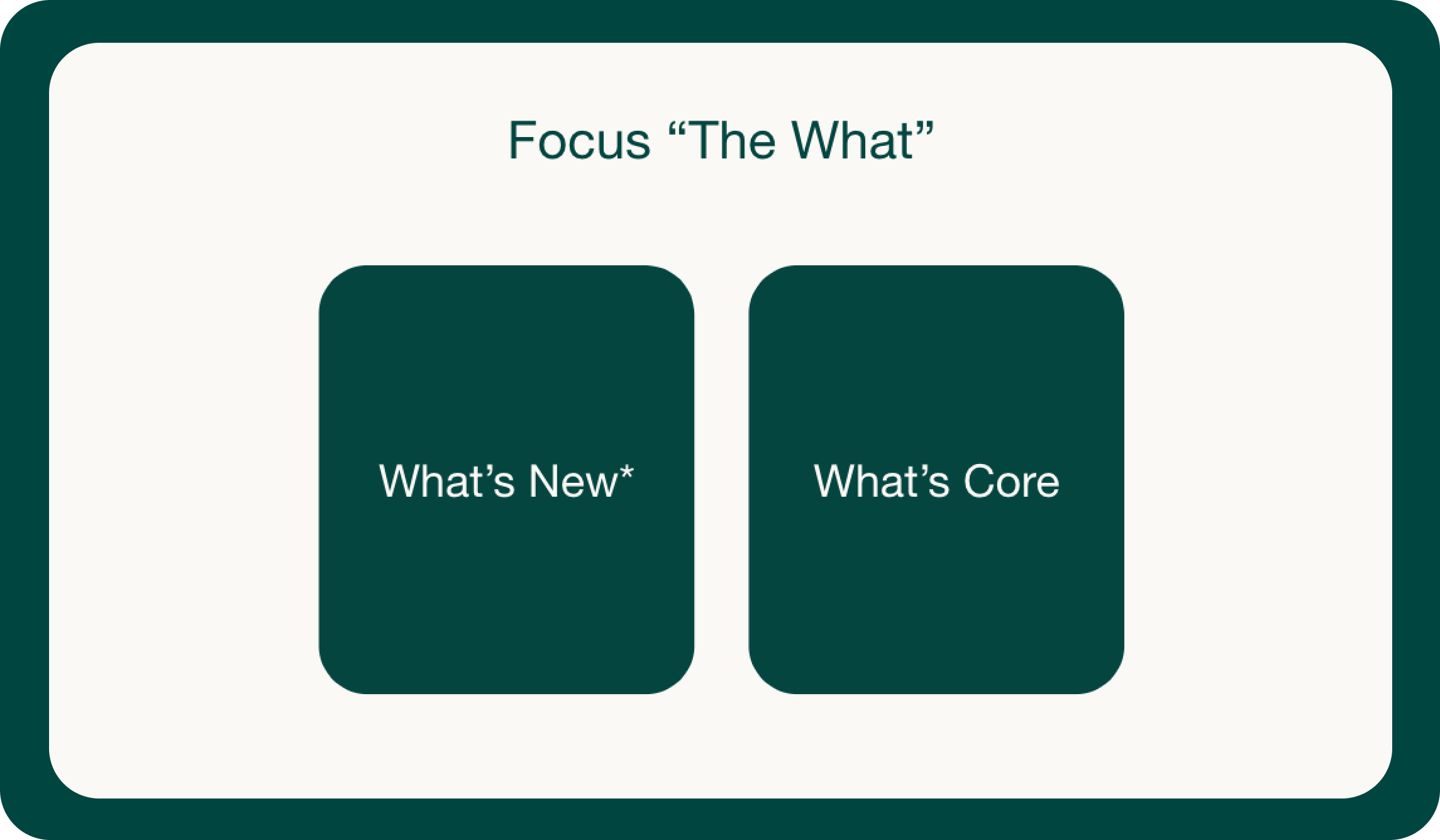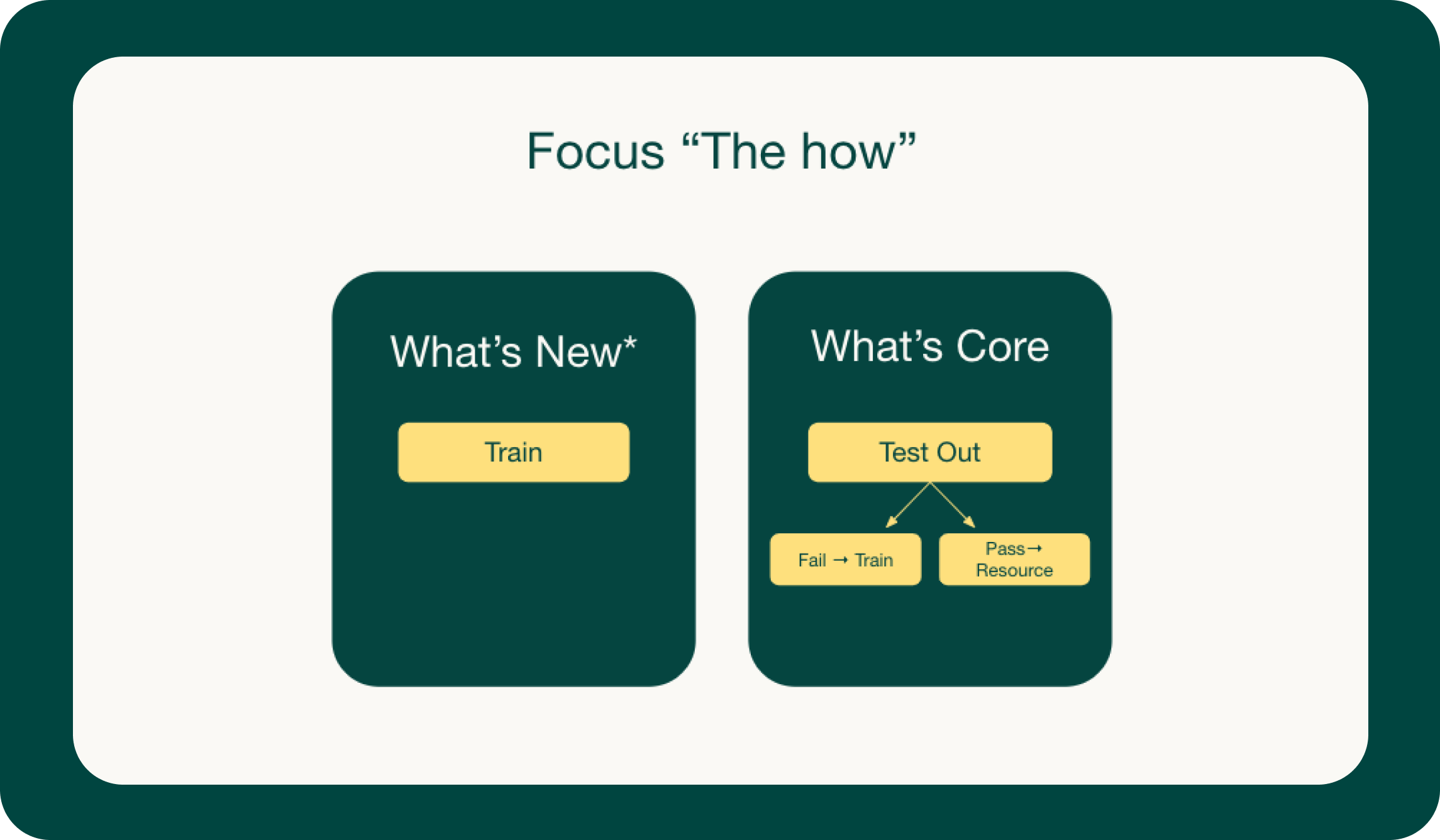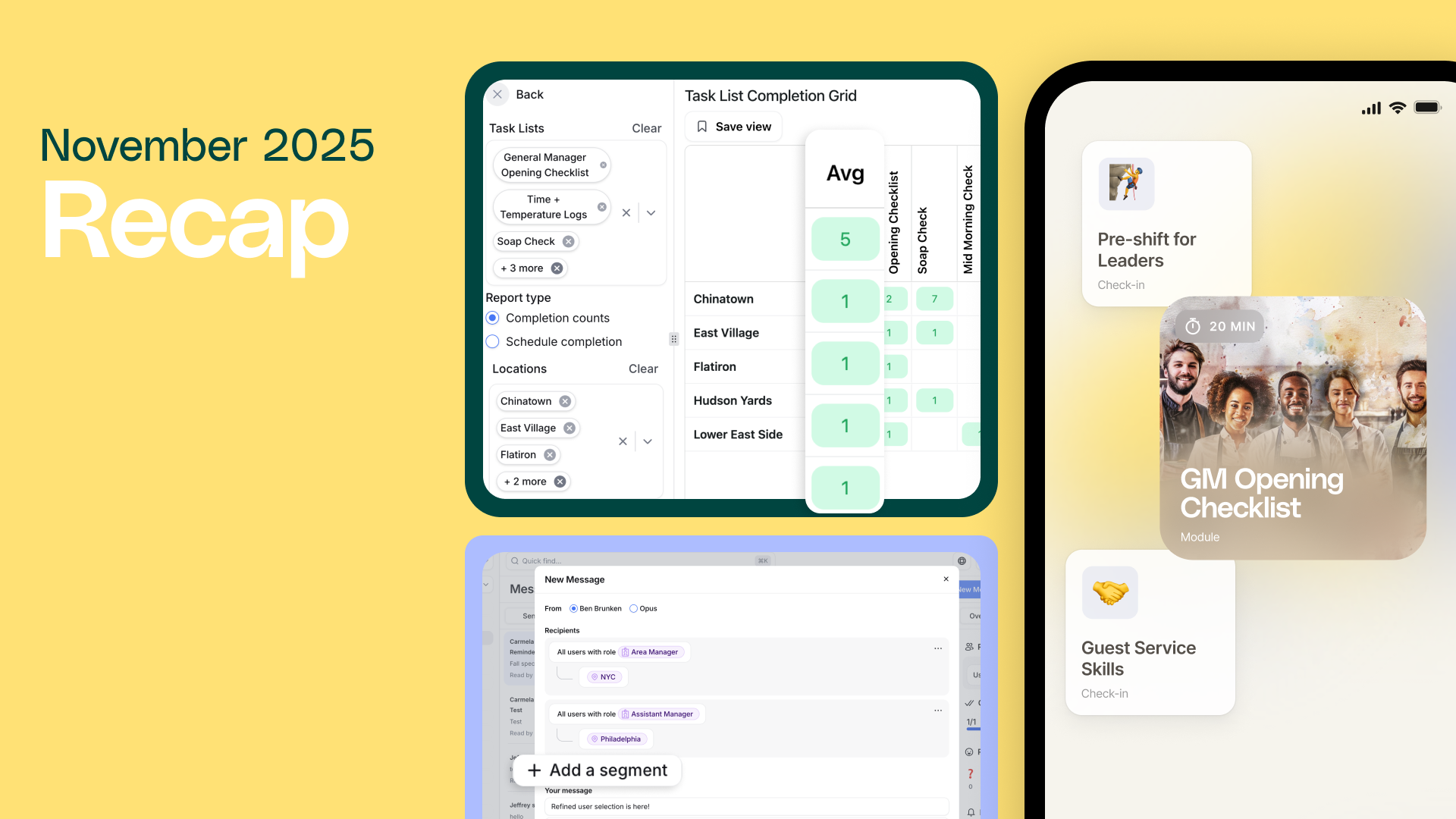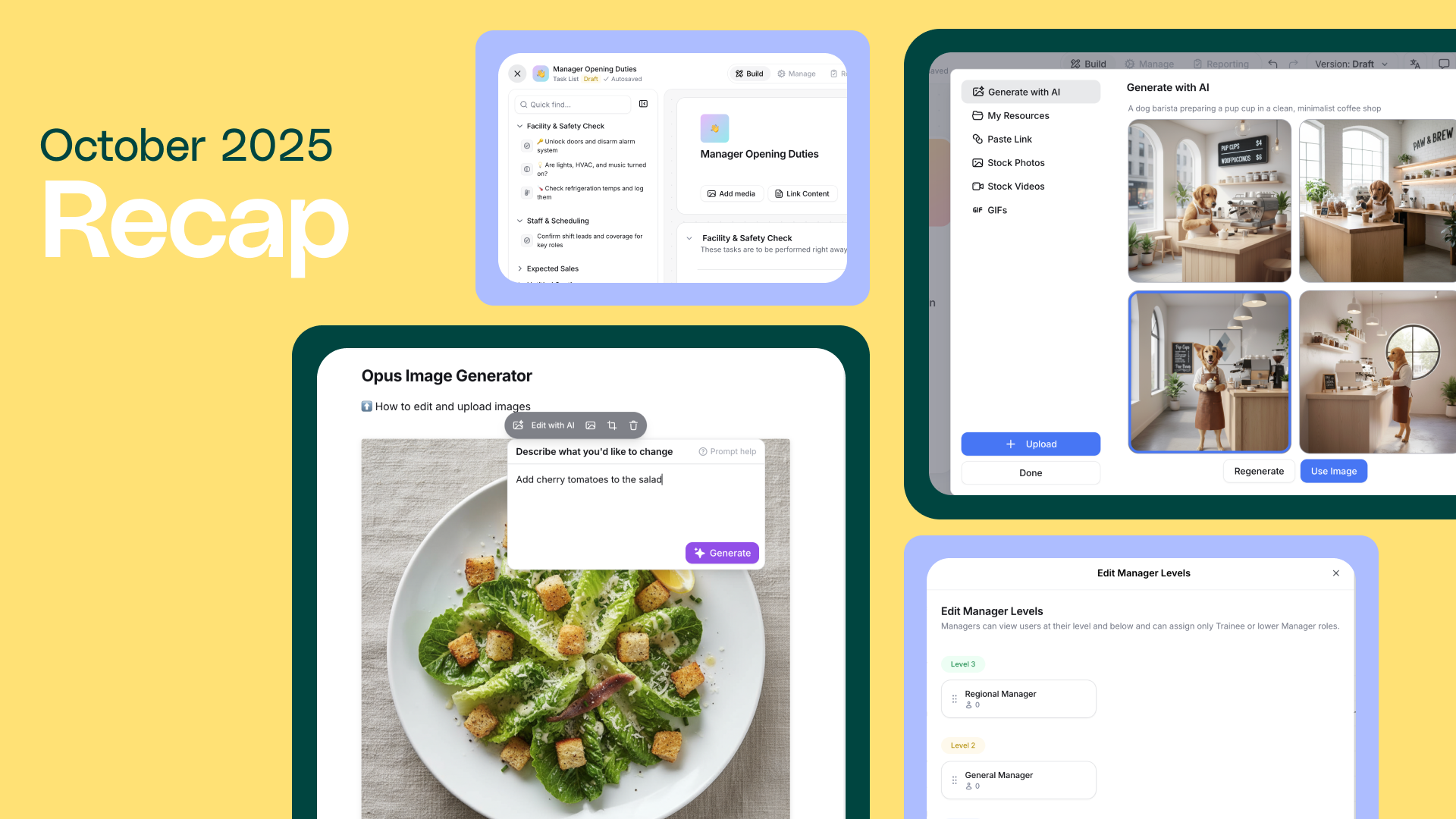Getting seasonal employees back up to speed efficiently is one of those operational challenges that many restaurants face, especially as they head into peak hiring seasons. The key is understanding that rehires have different needs than brand new employees.
During a recent Office Hours session on rehire training, Jeff St. Andrew, Director of Training at Nostimo Brands, shared practical insights from managing training across two different concepts: Beyond Juice Green Eatery and Detroit Wing Company. With eleven years of operational experience, Jeff has developed frameworks for getting seasonal workers back to productivity quickly.
💡 TL;DR: Planning is everything. To help, we created a re-hire training worksheet here
The Rehire Training Challenge
When session attendees were polled about their biggest rehire training challenges, the results revealed common operational pain points:
Poll Results were evenly split across:
- Maintaining consistency across multiple locations
- Making it a priority
- Determining what content to include
- Deciding who needs what level of training
Understanding the Rehire Training Framework: What’s New & What’s Core
When thinking about rehire training, it helps to break it down into two main areas: what's new and what's core.
- What's New includes operational changes, new menu items, or updated procedures that happened while the employee was away. This is where training automations can be particularly helpful.
- What's Core focuses on the fundamental skills and knowledge areas that remain consistently important to business operations.

Identifying Training Priorities
Rather than trying to cover everything, the discussion focused on selecting top three priority areas—referred to as the "golden three." These should address:
- Top customer complaints that have been occurring
- Critical safety risks specific to the operation type
- Areas that most directly impact profitability
The specific priorities will vary depending on the concept and operational needs.

Three Approaches to Delivering Rehire Training
Effective rehire programs typically use three different delivery methods, depending on the situation:
1. Direct Training
Best for covering new operational changes, procedures, or menu items introduced while the employee was away.
2. Assessment-Based Approach
Using quiz-only courses or manager check-ins to determine if someone needs additional training or if they can move straight to resource access.
3. Resource Library Access
Providing quick reference materials and job aids for information that doesn't need to be memorized but should be easily accessible during shifts.

Factors That Determine Training Intensity
Not every rehire needs the same level of training. Several factors help determine the appropriate approach:
As Jeff noted:
"Same thing applies to if somebody worked a month for you over the summer, that's not equivalent to that individual that worked a good four or five months doing through the school season. They really saw the brain growth.”
Jeff's Golden 3 Core Areas by Concept:

The difference reflects each concept's unique operational requirements. As Jeff explained: "Detroit Wing Company only has two stations within the restaurant, so it's a little bit easier to train those daily team members. Start with that food safety, and just let things take place from there. While Beyond is such a culture type of a brand, have to make sure that they're back into that culture piece of hospitality."
💡 Real-World Application: The Catering Training Example
When Detroit Wing Company relaunched their entire menu, Jeff's team used this as an opportunity to implement effective rehire training principles. They created a catering validation system that combined:
• A focused quiz to test catering knowledge
• A one-page resource explaining the importance of first impressions
• Emotional connection by timing it with graduation season
This approach meant that for rehires, the training path was straightforward: take the quiz, and if they passed, they just needed to review the resource document. If they didn't pass, they would be assigned the full catering training module.
The QR Code Solution for Flexible Training
Beyond Juice Green Eatery developed an innovative approach to balance automation with flexibility by creating printed job aids that include QR codes linking to current training modules.
This system allows managers to:
- Start employees at appropriate skill levels based on their background
- Provide access to up-to-date training content even with printed materials
- Give employees a visual overview of their complete training path
- Accommodate different schedules and availability
As Jeff explained: "This allows them to start wherever that trainer manager feels more appropriate for that day, and they can always jump back and forth wherever they need."
💡 To learn more about the training example visit here >>
Important Considerations for Rehire Success
The Attitude Factor
Jeff noted an important observation about rehire dynamics: "A rehire tends to be overly confident, both because they're not long term... So have to make sure at least touching up on rehiring. And if they have major resistance to a small test, that might speak volumes as far as how that continued relationship's gonna go."
Data and History Challenges
One practical challenge many operators face is losing training history when employees are deactivated from systems during their absence. This means starting assessment from scratch, but as Jeff pointed out: "That familiarity from management and the trainers—they should have a good idea of where to start, and they're the ones rehiring that person in the first place."
Manager Empowerment
Effective rehire training requires giving managers the tools and authority to make decisions about training intensity and reassign content as needed. This includes understanding how to read employee attitudes during assessment and knowing when full retraining might be necessary.
Technology Integration: AI-Powered Training Development
During the session, there was a demonstration of how technology can streamline rehire training creation. The example showed building a "fryer oil filtering refresher module" specifically designed for rehires who knew the basics but needed a focused reminder on the most critical elements.
The approach demonstrated:
- Creating short, focused courses (5 screens maximum) covering essential information
- Pulling assessment questions into separate modules for testing
- Building manager check-ins to facilitate hands-on validation
- Maintaining modularity so full training can be assigned if needed
This type of technology integration allows operators to create targeted refresher content quickly while maintaining the flexibility to assign more comprehensive training when assessment reveals gaps.
Key Takeaways from the Discussion
The Office Hours session highlighted several core principles for building effective rehire training programs:
Essential Framework Elements:
- Focus on top three priority areas rather than trying to cover everything
- Give managers clear tools and authority to assess rehire readiness
- Use flexible delivery methods based on individual employee backgrounds
- Pay attention to employee attitudes during assessment—resistance can be telling
- Remember that wanting to return is already a positive sign for culture fit
The goal is straightforward: get rehires ready to contribute productively within their first half-shift to full shift back. This requires intentional planning around what truly matters most for the operation and empowering the management team with clear frameworks for making training decisions.
As the discussion emphasized, rehire training isn't about treating returning employees exactly like new hires—it's about efficiently bridging any gaps that developed during their absence while leveraging the foundation they already have with the operation.
Missed the previous Office Hours? Find all of them here.
Want to join the next Office Hours? RSVP here






